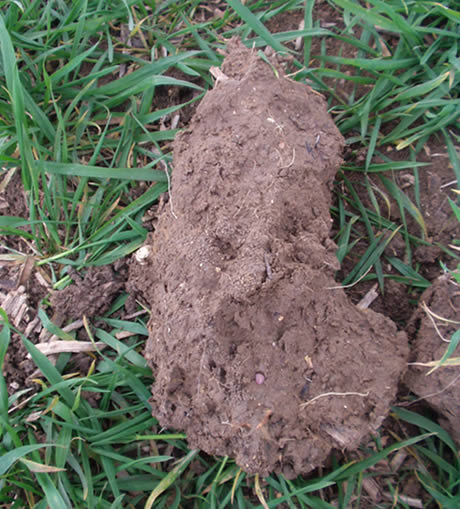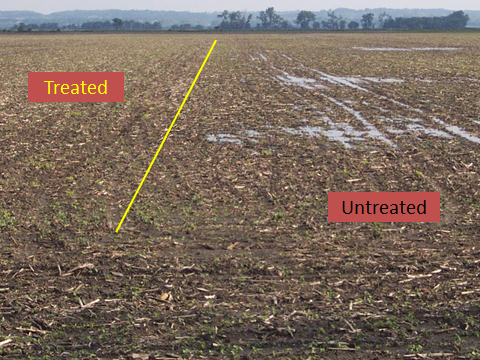To correct high magnesium levels in soil, reduce magnesium inputs and increase calcium levels. Applying gypsum or lime can help balance soil composition.
High magnesium in soil can hinder plant growth and nutrient uptake. An excess of magnesium can lead to nutrient deficiencies, particularly calcium and potassium. This imbalance affects crop yields and overall soil health. Farmers and gardeners must take corrective measures to restore balance.

Credit: www.pda.org.uk
Identifying the root cause of high magnesium levels is crucial. This might involve soil testing to determine the exact magnesium concentration. After assessment, implementing appropriate amendments can improve soil quality. Understanding the relationship between magnesium and other nutrients is vital for sustainable gardening or farming practices. Effective management ensures healthier plants and better harvests.
How to Correct High Magnesium in Soil : Step by Step Guide
The Importance Of Magnesium Balance In Soil
Maintaining a balanced magnesium level is crucial for healthy soil. High magnesium can lead to poor plant growth. Plants may show yellowing leaves, stunted growth, and leaf curling. These symptoms can affect overall health and yield.
Another sign is poor nutrient uptake. Plants struggle to absorb calcium and potassium. This imbalance can lead to deficiencies in essential nutrients. Understanding these signs helps in correcting soil problems.
| Signs of High Magnesium Levels | Effects on Plant Health |
|---|---|
| Yellowing leaves | Reduced photosynthesis |
| Stunted growth | Poor yield |
| Leaf curling | Weak plants |
| Poor nutrient uptake | Deficiencies in calcium and potassium |
Identifying High Magnesium In Soil
High magnesium levels in soil can affect plant growth. Testing soil helps identify these levels. Various methods exist for soil testing. Some common methods include:
- Home test kits
- Laboratory analysis
- Professional soil services
Interpreting the test results is essential. Check the magnesium levels reported. A reading above 150 ppm indicates excess magnesium. This can lead to nutrient imbalances.
Look for signs of magnesium toxicity in plants. Yellowing leaves and stunted growth are common indicators. Adjusting soil nutrients helps restore balance.
Natural Factors Leading To High Magnesium
Many natural factors can lead to high magnesium levels in soil. Geological sources often contribute significantly. Certain rocks contain high magnesium. When they weather, magnesium enters the soil. This is common in areas with magnesian limestone or dolomite. These rocks release magnesium over time.
Water quality plays a crucial role in magnesium levels. Water that flows over magnesium-rich soils can absorb the mineral. Rainwater may also pick up magnesium as it travels. Irrigation water can introduce magnesium if it comes from high-magnesium sources. Monitoring water quality is essential for managing soil magnesium levels.
Amending High Magnesium Soil
Adding organic matter improves soil structure and reduces magnesium levels. Compost, well-rotted manure, and leaf litter are great options. They help increase drainage and promote healthy microbes.
Using gypsum can also correct high magnesium in soil. Gypsum provides calcium, which helps displace magnesium ions. This process makes magnesium less available to plants. Apply gypsum according to soil test results. Follow local guidelines for the best results.
Chemical Solutions And Their Applications
Using lime can help reduce high magnesium levels in soil. It adds calcium and balances nutrients. Apply lime based on soil tests for best results. Choose agricultural lime for effectiveness.
Sulfur-based amendments are another option. They help lower magnesium levels over time. Products like gypsum or elemental sulfur work well. Apply these materials based on specific soil needs.
| Amendment | Benefits |
|---|---|
| Lime | Reduces magnesium and adds calcium |
| Gypsum | Improves soil structure and reduces magnesium |
| Elemental Sulfur | Helps lower pH and magnesium levels |

Credit: www.sciencedirect.com
Cultural Practices To Manage Magnesium Levels
Crop rotation is a great way to manage magnesium levels. It helps break pest cycles and improves soil health. Different crops need different nutrients. This practice ensures balanced nutrient uptake over time.
Proper irrigation techniques are crucial for soil management. Overwatering can lead to magnesium leaching. Use drip irrigation to deliver water directly to the roots. This method minimizes water waste and maintains soil structure.
Regularly check soil moisture levels. This helps avoid over-irrigation. Mulching can also retain soil moisture and reduce evaporation.
Monitoring And Maintaining Soil Health
Regular soil testing helps determine magnesium levels. Test your soil at least once a year. This practice keeps soil health in check. Choose a reliable lab for accurate results.
Adjusting fertilization practices can reduce high magnesium. Use fertilizers low in magnesium. Organic options like compost can also help. Apply these amendments based on soil test results.
| Fertilizer Type | Magnesium Content |
|---|---|
| Calcium Nitrate | Low |
| Potassium Sulfate | Low |
| Compost | Variable |
Case Studies And Success Stories
Many vineyards faced issues with high magnesium levels in their soil. They found that reducing magnesium helped improve grape quality. By applying calcium amendments, they successfully rebalanced the soil. These changes led to better grape yield and flavor.
Organic farms also deal with magnesium management. Farmers used cover crops to absorb excess magnesium. This method not only reduced magnesium levels but also improved soil health. They noticed better crop diversity and stronger plants over time.

Credit: soilsolutions.net
Frequently Asked Questions
How Does High Magnesium Affect Plants?
High magnesium levels can disrupt nutrient uptake. It interferes with calcium and potassium absorption, leading to deficiencies. Symptoms include yellowing leaves and stunted growth. Regular soil testing helps monitor magnesium levels and ensures a balanced nutrient profile for healthy plants.
What Causes High Magnesium In Soil?
High magnesium often results from excessive fertilization or certain soil types. Sandy soils tend to retain magnesium better than others. Additionally, irrigation with magnesium-rich water can contribute to increased levels. Understanding your soil composition is key to managing magnesium effectively.
How Can I Reduce Magnesium Levels?
To lower magnesium levels, consider applying gypsum or calcium carbonate. These amendments help displace magnesium in the soil. Additionally, improving drainage and organic matter can enhance nutrient balance. Regular soil tests will guide your amendment strategy for optimal results.
Are There Plants That Tolerate High Magnesium?
Yes, some plants tolerate high magnesium levels well. Certain grasses, succulents, and legumes can adapt to such conditions. However, most garden plants prefer balanced nutrient levels. Always choose the right plants for your soil type for the best results.
Conclusion
Correcting high magnesium levels in soil is essential for healthy plant growth. Start by testing your soil regularly to monitor magnesium levels. Incorporate organic amendments, adjust irrigation practices, and choose appropriate crops. With these strategies, you can restore balance to your soil and promote a thriving garden environment.
Happy gardening!

